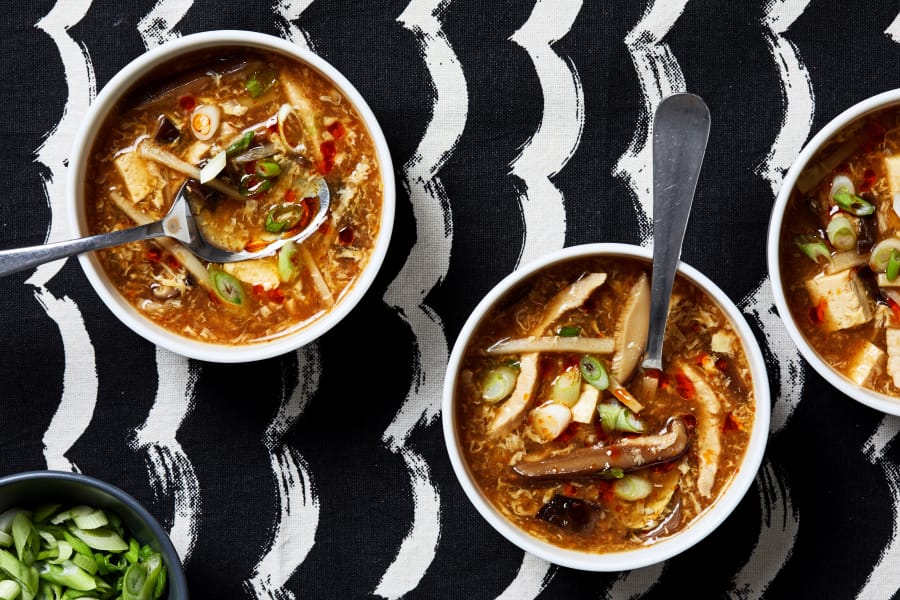To say my taste in food growing up leaned mild over spicy would be an understatement. Case in point: our regular trips to our local Chinese spot. While most of my family opted for the hot-and-sour soup, I stood alone on wonton island.
Years later, when I finally jumped on the hot-and-sour bandwagon, I started making up for lost time. On ordinary days, on cold days, on I-have-a-cold days, it delivers just the amount of mouth-puckering, tingly comfort that I crave. (It’s right up there with Thai tom yum gai, in my book). I’ll be the first to admit that it’s hard to beat the convenience and price of my local carryout spot. But I do love the challenge of re-creating a favorite restaurant dish at home, and if you’re someone who appreciates having more control over what you eat, it’s a no-brainer.
So here’s my take on Takeout-Style Hot-and-Sour Soup. As is often true, I got the best results when pulling inspiration from a variety of sources, in this case three of them. The recipes were surprisingly similar in a lot of ways, down to the amounts of some ingredients. Still, I liked aspects of each that were not the same across the board. Among the elements I wanted to fuse: the bamboo shoots from one of my go-to takeout recipe authors, Diana Kuan; the pork and savory wood ear mushrooms from blogger Maggie Zhu at the Ominvore’s Cookbook blog; and the potent, generous pour of black vinegar and chile oil from America’s Test Kitchen, which published a recipe I’d toyed around with in the past.
There are two ingredients that help make hot and sour what it is. The hot comes courtesy of ground white pepper. It’s from the same source as black pepper, but the berries are allowed to ripen before their skins are removed. The result is technically less spicy, but more complex and floral. You can use black pepper here in a pinch – I’ve done it, though, and the flavor was just not quite there. Thankfully, white pepper is a pretty standard grocery store find. The other key ingredient represents the sour: Chinkiang black vinegar. This will probably require a trip to your local Asian market or an online order. Sichuan food authority Fuchsia Dunlop says the vinegar “is actually made from glutinous rice, and the dark color comes naturally from scorched rice grains.” Food 52 elaborates with a bit more insight from Dunlop, explaining that “it’s less sweet than balsamic, but not as tart as sherry or red wine vinegar.” Seeking out the vinegar is worth it (a single bottle will last you many batches of soup, which I guarantee you’ll want to make). If, however, that’s not in the cards, ATK recommends a replacement of 1 tablespoon each of balsamic and red wine vinegars. It won’t be the same – again, I’ve made the swap in the past – but it’s something.



